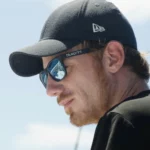
Last weekend the annual meeting of the European Elasmobranch Association (EEA) took place in the Bristol Aquarium (UK). Organized this year by the UK-based Shark Trust, a total of around 170 delegates from over 22 different countries attended and there were a total of 69 presentations given over the course of 2.5 days. Organized in 1996 for the first time by its founding members, this was actually the 20th anniversary of the EEA.
This was my first EEA conference and I have to say, if you’re into shark science, this is your annual ‘must visit’. From the velvet belly lantern shark (Etmopterus spinax) – probably the new favorite shark of every delegate – to angelsharks, sawfishes, skates and many other species. From behavioral studies like personality research in lemon sharks, to acoustic telemetry and conservation measures for better shark protection. This EEA conference program had it all!
The keynote and high impact speakers at this EEA were:
-
- Dr. Jim Ellis – Centre for Environment, Fisheries and Aquaculture Science
The evolution of elasmobranch assessment and management with data-limited dilemmas.
- Dr. Dean Grubbs – Florida State University
Trophic cascades and Cownose Ray scapegoats: Save the Bay – Eat a Ray and the effects of confirmation bias on elasmobranch conservation. - Prof. Dr. David Sims – Marine Biological Association
The Global Shark Tracking Project: worldwide analysis of movements, space-use, hotspots and fisheries interactions.
- Daniel Suddaby – World Wildlife Fund
Tuna tales: using market levers to transform fisheries management.
- Prof. Dr. Colin Simpfendorfer – James Cook University
Environmental DNA detects Critically Endangered Largetooth Sawfish in the wild. - Dr. Michelle Heupel – Australian Institute of Marine Science
A moving target: marine protected area conservation of reef sharks.
- Dr. Jim Ellis – Centre for Environment, Fisheries and Aquaculture Science
By far the most impressive, and probably controversial, presentation was given by Dean Grubbs, who presented a rebuttal on the study by Meyers et al. (2007), which described a trophic cascade with increase of cownose rays as a response to a decline in large-bodied shark populations. Grubbs and co-authors described flaws in the paper and identified the cownose ray to be the scapegoat, as this vulnerable species was now targeted on a large scale to counteract the so-called cascading effects described by Meyers et al. I think this presentation really stimulated the audience, consisting of students, scientists and conservationists, to be more critical towards scientific publications and methods, but also to be more critical and accurate as a scientific reviewer.
I was glad to see presentations focussing on sawfish and angelsharks, two groups of elasmobranchs that are extremely vulnerable to anthropogenic stressors and which are normally a bit underrepresented. Colin Simpfendorfer, to me known as one of the best scientists in the field of shark ecology and acoustic telemetry, presented how eDNA can be a promising tool to study the presence of largetooth sawfishes (Pristis pristis) in river systems. An interesting talk by Michelle Heupel used acoustic telemetry to determine movements of grey reef sharks (Carcharhinus amblyrhynchos), silvertip reef sharks (Carcharhinus albimarginatus) and bull sharks (Carcharhinus leucas) between small reefs on the Great Barrier Reef. Especially the visualization of the acoustic telemetry data and population connectivity was very inspiring, to read more about one of these methods read this paper.
Just before I had to leave on Sunday, my presentation was scheduled and I got the great opportunity to present the first acoustic telemetry data for the Duch Caribbean. For this opportunity I would like to thank the Shark Trust and the EEA!
Overall, the EEA is the perfect platform for students with a passion for elasmobranch research to meet new people and high-level scientists. For scientists, from both in- and outside Europe, the EEA is a perfect platform to communicate their findings with fellow shark researchers. In the end, it doesn’t get better then nearly three days filled with shark and ray science!
Hope to see you all during the 21st meeting of the EEA next year!



